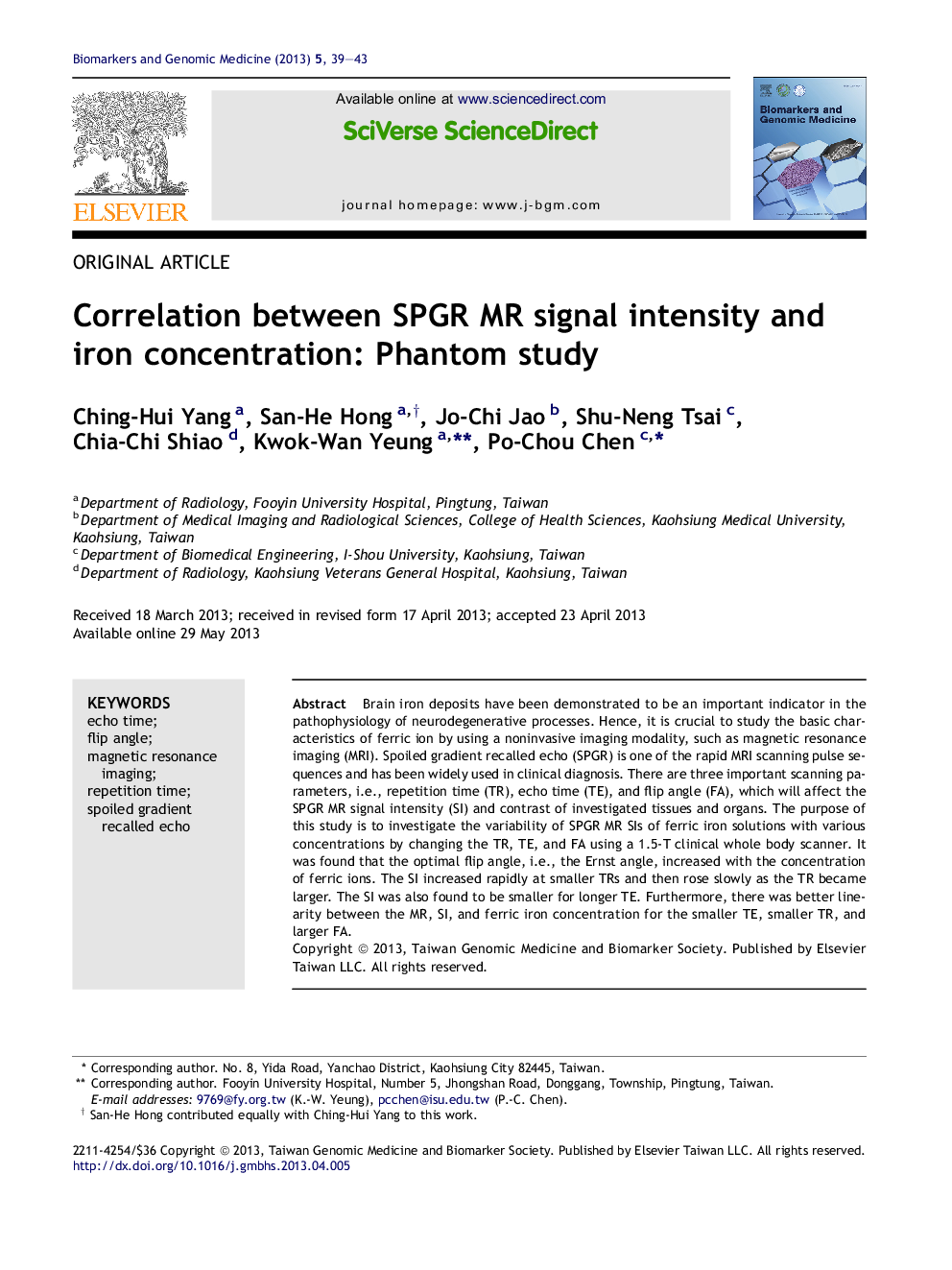| Article ID | Journal | Published Year | Pages | File Type |
|---|---|---|---|---|
| 3459384 | Biomarkers and Genomic Medicine | 2013 | 5 Pages |
Brain iron deposits have been demonstrated to be an important indicator in the pathophysiology of neurodegenerative processes. Hence, it is crucial to study the basic characteristics of ferric ion by using a noninvasive imaging modality, such as magnetic resonance imaging (MRI). Spoiled gradient recalled echo (SPGR) is one of the rapid MRI scanning pulse sequences and has been widely used in clinical diagnosis. There are three important scanning parameters, i.e., repetition time (TR), echo time (TE), and flip angle (FA), which will affect the SPGR MR signal intensity (SI) and contrast of investigated tissues and organs. The purpose of this study is to investigate the variability of SPGR MR SIs of ferric iron solutions with various concentrations by changing the TR, TE, and FA using a 1.5-T clinical whole body scanner. It was found that the optimal flip angle, i.e., the Ernst angle, increased with the concentration of ferric ions. The SI increased rapidly at smaller TRs and then rose slowly as the TR became larger. The SI was also found to be smaller for longer TE. Furthermore, there was better linearity between the MR, SI, and ferric iron concentration for the smaller TE, smaller TR, and larger FA.
